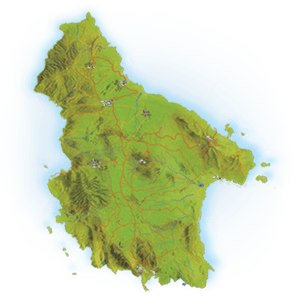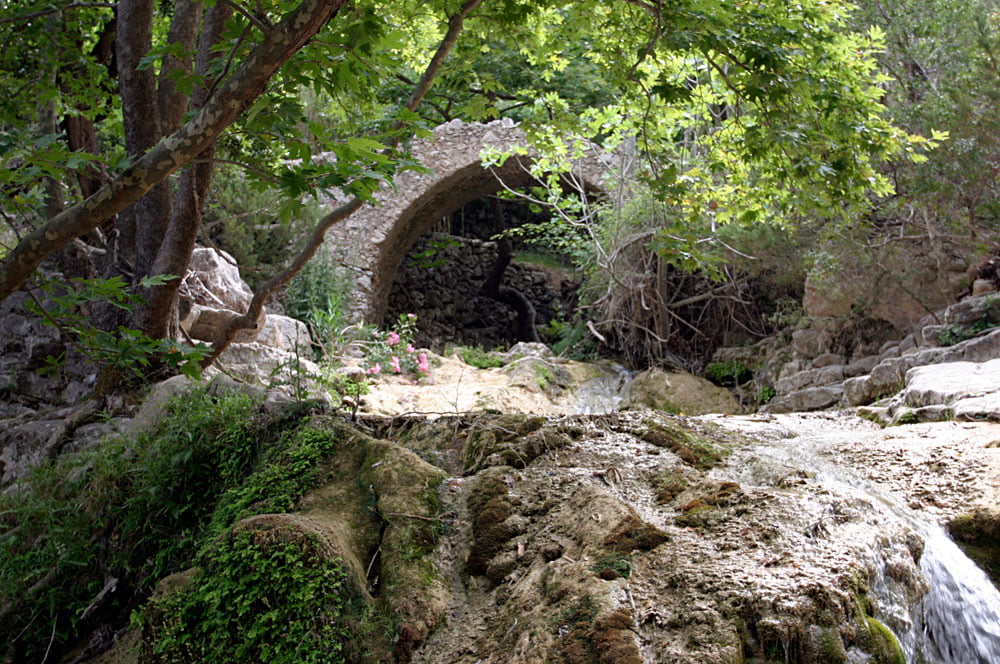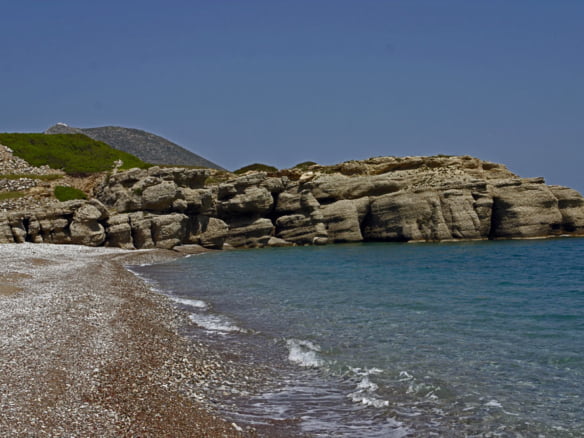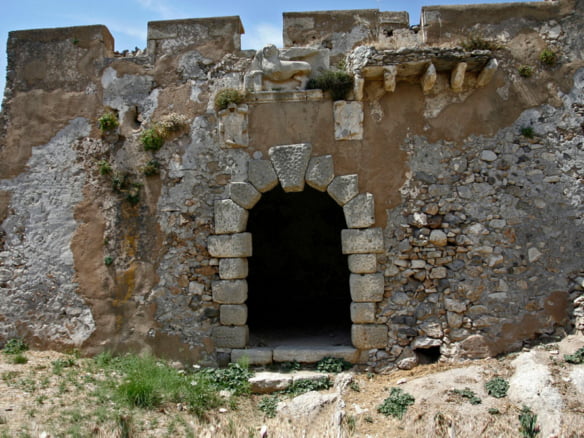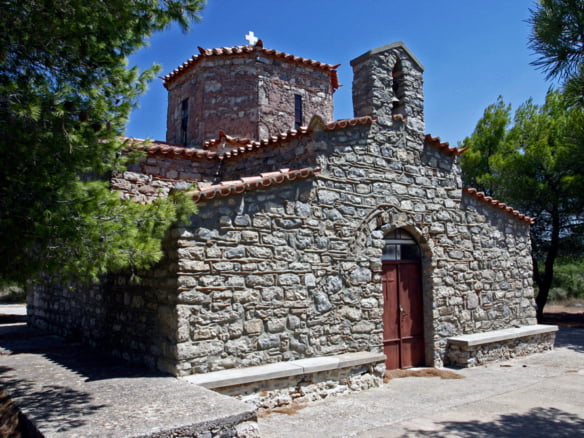From Flowering Slopes to Secret Paths
The island has no voice, and yet it speaks. It speaks with roots, with wings, with scales and with fragrance. It does not wait for anyone to interpret it; there is, as it always has been, a living organism, eternal and vulnerable at the same time, wrapped in sea and mystery.
Its breath begins from the lowlands. There, on the sunny hills, the semi-shrubs spread their network of scents. The astovi, with its dark branches, stands still and quiet, hiding lizards and secrets among its thorns. The genista and the euphorbia, humble and silent, grow where the ground aches and dries. The sage with its silvery shine reminds of wisdom, while the asphaka, the thyme, the myrtle and the honeysuckle offer the breeze its first songs.
The trees rise like temple columns. The wild olive holds centuries in the wrinkles of its trunk. The carob tree, dark and round, offers shade and fruit without asking for anything in return. The plane trees in the ravines know no time; their roots listen to the passing of the seasons. The cedar, rare and reverent, shields the extreme shores with its hard wood. Beside it, the almond trees bloom early, as if defying the cold, bringing the first signs of promise.
But the island’s voice is not only in the trees — it is in the colors that change without a sound. The sempervivums, small yellow flowers that never wither, remain on the slopes like symbols of immortality. Wild tulips (castanioles) are in full bloom in spring, while orchids — some of the rarest in the Mediterranean — bloom almost secretly, in strange, almost unreal forms.
See in detail the flora of Kythira
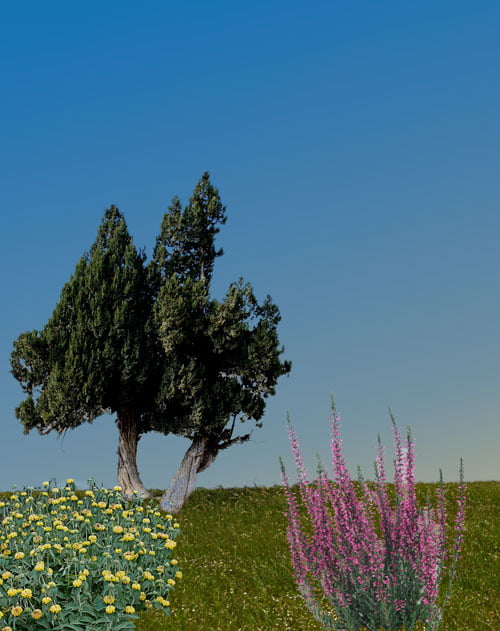
The soil, however, is not alone. It moves. Down below, toads and frogs sing in the ponds of Karavas and Mylopotamos. Lizards, small and shiny, sun themselves on the stones like broken sunbeams. The zourida, the island’s small weasel, burrows unseen in the roots. And the ferrets, hedgehogs, hares, only move when no one is looking.
The day is getting shorter, and the sky is filled with feathers. Peregrine falcons (Falco peregrinus), with eyes like blades, tear the air without a sound. From the ends of the world, migratory birds come, stop for a while, rest on the branches, bathe in the waters, and continue. Thrushes, turtledoves, larks, nightingales, all play their notes in the ancient concert. The sky of Kythera is not quiet — it changes, it breathes, it flies.
And then, the sea comes. It has always been there, it always will be. In its depths, the meadows of Posidonia tremble like green dreams. There live mullets, breams, barrens, and octopuses hide in the stones, crabs in the crevices, and schools of small fish dance to the rhythm of the current. The Caretta caretta sea turtles appear slowly, like memories of antiquity. They dig, they give birth, they leave. Monachus monachus, the seals, hermits of the water, choose caves that are inhospitable, but eternally safe.
When night falls, it is not darkness that dominates. It is the depth. It is the breath of the island that becomes an evening pulse. Bats fly silently, collecting dreams from the darkness. Insects whisper in the bushes. And predators, with the patience of centuries, watch the life that never sleeps.
See in detail about the fauna of Kythira
Kythira is not just a place. It is an ecosystem with a voice. A primordial pulse, a whisper without beginning or end. Everything that lives here lives because it must. Everything that grows takes deep root in memory, in stone, in silence. The island does not ask you to hear it. It simply asks you to feel it.









